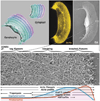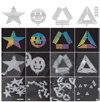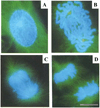Creation of functional micro/nano systems through top-down and bottom-up approaches
- PMID: 19382535
- PMCID: PMC2778060
Creation of functional micro/nano systems through top-down and bottom-up approaches
Abstract
Mimicking nature's approach in creating devices with similar functional complexity is one of the ultimate goals of scientists and engineers. The remarkable elegance of these naturally evolved structures originates from bottom-up self-assembly processes. The seamless integration of top-down fabrication and bottom-up synthesis is the challenge for achieving intricate artificial systems. In this paper, technologies necessary for guided bottom-up assembly such as molecular manipulation, molecular binding, and the self assembling of molecules will be reviewed. In addition, the current progress of synthesizing mechanical devices through top-down and bottom-up approaches will be discussed.
Figures

























References
-
- Horne RW, Wildy P. Virology. 1961;15:348–373. - PubMed
-
- Aizenberg J, Tkachenko A, Weiner S, Addadi L, Hendler G. Nature. 2001;412:819–822. - PubMed
-
- McMahon TA, Bonner JT. On size and life. New York: Scientific American Library : Distributed by W.H. Freeman; 1983.
-
- Mann S. Biomineralization : principles and concepts in bioinorganic materials chemistry. New York: University Press, Oxford; 2001.
-
- Mann S. Journal of the Chemical Society-Dalton Transactions. 1997:3953–3961.
Publication types
MeSH terms
Substances
Grants and funding
LinkOut - more resources
Full Text Sources
